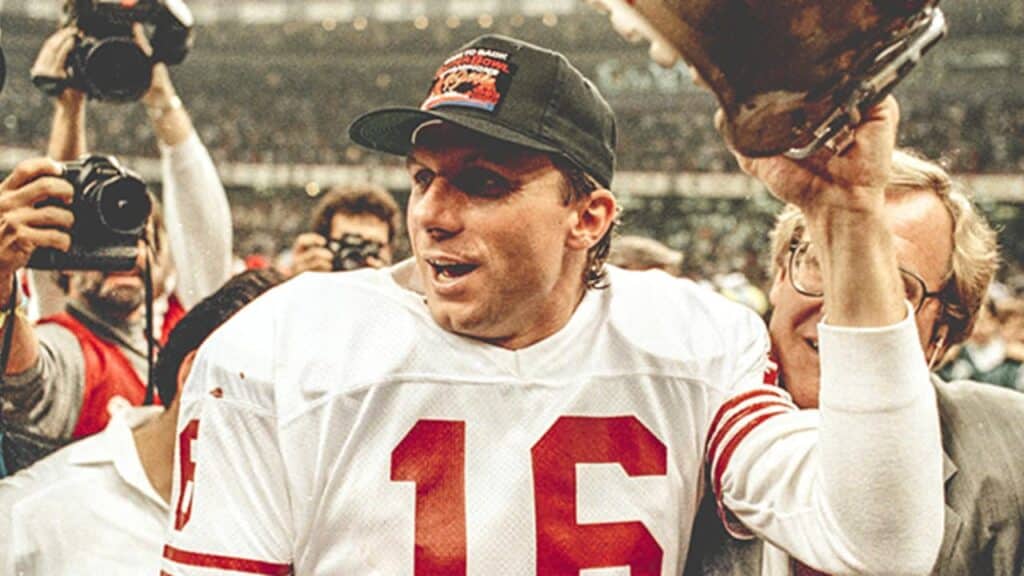This is total value record differentials for quarterbacks that played mostly in the 1980s and 1990s.
The concept of taking such an approach originated from a Bleacher Report article years ago. The Bleacher Report article referenced a Pro-Football Reference article that not only was the source of the original calculations, but also had the average quarterback’s win probability based on the points the defense gives up. The numbers are below.
A quarterback should win 93.5% of games when the defense allows 0-10 points.
A quarterback should win 76.1% of games when the defense allows 11-15 points.
A quarterback should win 52.6% of games when the defense allows 16-20 points.
A quarterback should win 38.8% of games when the defense allows 21-25 points.
A quarterback should win 17.7% of games when the defense allows 26-33 points.
A quarterback should win 3.6% of games when the defense allows 34+ points.
The differentials are divided into two because the postseason has to be weighted very heavily due to its importance and the fact that it has the best level of competition, which can better showcase how impactful that specific quarterback is. In the playoffs, the advantages some quarterbacks may have over others in terms of scheme and offensive help is neutralized since they are playing good playoff teams that can better match them talent for talent or has had to properly game plan a quarterback’s teammates and game plan against the quarterback’s strengths and flaws. The chart below shows the career regular season record, postseason record differential, and the total value record differential for quarterbacks that played many seasons as primary starters in the 1980s and 1990s.
| Name | Team(s) | Career Regular Season +/- | Career Postseason +/- | Total Value +/- |
| John Elway | DEN | 1.60 | 4.41 | 3.00 |
| Joe Montana | SF | 1.37 | 3.30 | 2.34 |
| Brett Favre | GB, NYJ, MIN | 1.58 | 2.58 | 2.08 |
| Dan Marino | MIA | 1.54 | 1.86 | 1.70 |
| Steve Young | SF | 0.94 1.00 (excluding pre-nfl years of 1984) | 2.38 | 1.66 1.69 (excluding pre-nfl years of 1984) |
| Troy Aikman | DAL | -0.01 | 3.28 | 1.64 |
| Jim Kelly | BUF | 1.09 1.39 (excluding pre-nfl years of 1983-1985) | 1.53 | 1.31 1.46 (excluding pre-nfl years of 1983-1985) |
| Steve McNair | TEN, BAL | 0.93 | 0.39 | 0.66 |
| Randall Cunningham | PHI, MIN | 0.77 0.81 (excluding retired season of 1996) | 0.02 | 0.39 0.41 (excluding retired season of 1996) |
| Warren Moon | HOU, MIN, SEA, KC | 0.32 0.43 (excluding pre-nfl years of 1978-1983) | 0.00 | 0.16 0.22 (excluding pre-nfl years of 1978-1983) |
| Drew Bledsoe | NE, BUF, DAL | -0.03 | -1.30 | -0.67 |
Marino had bad defensive support in some of his postseason games. With added context, one can point to the amount of interceptions he threw as an indicator that he was sometimes hurting his defense when he turned it over. Nonetheless, the defensive support still could have been better in some games. Marino’s postseason record differential is not bad but going 5-0 when the defense allows only 16-20 points instead of just 4-1 or playing better and winning at least one of the games in which the defense gave up 34+ points could have increased his postseason record differential. As a result, his total value record differential would have been higher.
Montana had strong defensive support for half of his playoff games as he went 7-0 when the defense allowed 10 points or fewer. However, Montana going 4-1 when the defense allows 21-25 points helps him a lot since the average quarterback only wins those games at 38%. Montana going 1-2 when the defense allows 26-33 points is also slightly above what the average quarterback would have done in that spot. Montana’s regular season differential is solid but not great. However, his postseason record differential being over 3 helps make his total value record differential as high as it is. The 1981 playoff run was great as many of the important wins above average came from that run.
Elway’s regular season record differential is solid but not great. However, he had a great postseason differential. Elway had a bad loss that made him only 4-1 instead of 5-0 when the defense gives up 10 points or fewer. He was also 0-4 when the defense gave up 34+. However, Elway going 4-0 when the defense gives up 16-20 points and especially going 5-1 when the defense gives up 21-25 points are win-loss records that are significantly higher than what the average quarterback would have done in those situations as it pertains to the amount of points the defense gave up. His postseason success plays a big part as to why his total value is as high as it is and as to why it is higher than that of Marino and Montana.
Young’s postseason record differential also helps his total value record differential, as he was 3-2 when the defense gave up 26-33 points. It is very impressive since the average quarterback only wins those types of games at a 17% rate. However, his 0-1 record when the defense gives up 16-20 points is below average. Also, his 1-1 record when the defense gives up 21-25 points is above average but it could have been higher. Had he performed better in those groupings, his postseason record differential and subsequently his total value record differential would have been higher.
Favre had a solid career regular season record differential and good postseason record differential. In the postseason, Favre was 1-6 when his defense gave up 26-33 points. The approximate 14 win percentage is technically an underachievement since the average quarterback wins those types of games at approximately 17 percent.
Cunningham finished with essentially an average total value record differential. His regular season record differential was close to a game above average, but his postseason was average. He was 2-1 when the defense gave up 21-25 points, which is above average, but was 1-2 when the defense gave up 16-20 points, which is below average.
Kelly was only a game above average in the regular season and a game and a half above average in the postseason. Kelly went 0-1 when his defense gave up 16-20 points, which is below average. Aside from winning more in the regular season, Kelly winning that postseason game could have increased his postseason record differential and subsequently his total value record differential.
Aikman was basically average to even marginally below average in the regular season in terms of winning compared to the average quarterback. What helped him tremendously was his good postseason record differential being over 3 games above average. This is the reason why he even has a total value record differential over slightly over a game and a half above average.
McNair finished just under a game above average in the regular season and was basically average in the postseason. McNair went 1-0 when his defense gave up 26-33 points, which is well above average, but he went only 1-1 when his defense gave up 11-15 points, which is below average to even things out. His total value record differential ends up being under a full game above average.
Bledsoe ended up being below average in the regular season and postseason with the respective record differentials. With regard to the postseason, his 0-1 record when the defense gives up 16-20 points and him only going 3-1 instead of 4-0 when the defense gives up 10 points or fewer contributed to his very low postseason record differential.
Moon’s total value record differential is essentially just average and it stems from his regular season and postseason record differentials being average. In the postseason, Moon’s defensive support was not great. However, Moon going only 1-1 when his defense gives up 16-20 points is a slight underachievement. Also, going 0-3 when the defense gives up 26-33 points is technically below average. Going at least 1-2 in that category would have helped his postseason differential.





